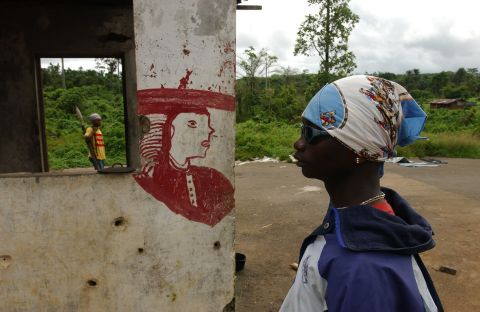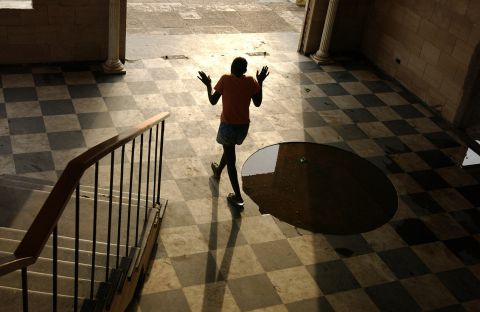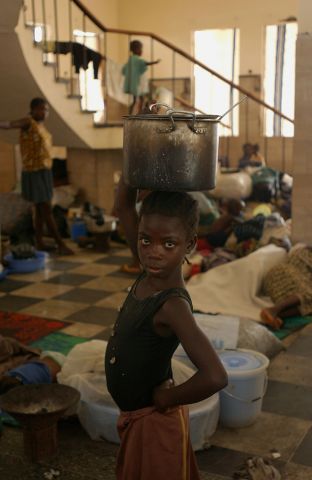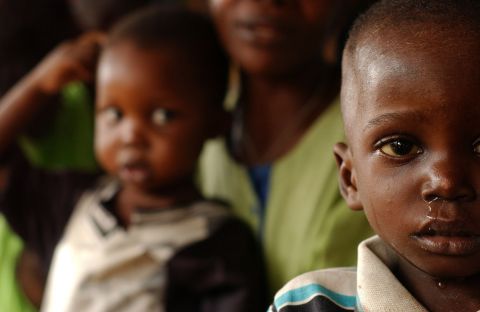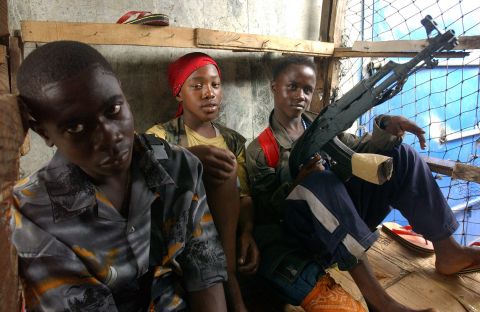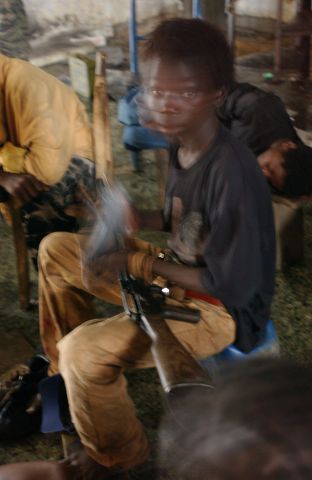Liberia
By Noel Quidu
Aug 12 - 30th Oct 2006
Text by Tom Masland / Newsweek
The latest cycle of violence was vicious even by West African standards. By
July 2003, rebels had all but surrounded the Liberian capital, Monrovia. Under
intense diplomatic pressure to avert a bloodbath, President Charles Taylor
said he was ready to leave the country for exile in Nigeria. It seemed that
his catastrophic six-year tenure would end quietly. But Taylor insisted on
staying until Nigerian troops arrived to monitor a ceasefire. Week after
week, delays pushed back the deployment date. Emboldened by a fresh arms
shipment from a rival neighbor, Guine, the rebels made a grab for the
city’s commercial heart, the port. Quickly overrunning government defenses,
they laid siege to the city. Only three bridges separated them from a
derelict capital swollen by refugees to 1.5 million people—more than twice
its normal size. The result was three weeks of horror—a true descent into
the Heart of Darkness—as supplies of food and clean water vanished and the
rebels fired mortar rounds indiscriminately on a helpless population,
killing hundreds.
July 21 2003. may have been the low point. Rebel mortar barrages hit residential
neighbourhoods and two U.S. embassy compounds filled with refugees. Nearly
100 people died. Distraught survivors piled 18 bodies in front of the main
gate of the U.S. Embassy and cried out for a U.S. military intervention to
stop the slaughter. The next morning, Red Cross workers took the bodies away
for unceremonious burial on a nearby beach. Fighting between government
loyalists and rebel forces was especially intense at the so-called Old
Bridge, where fighters engaged across a narrow lagoon with machine guns and
rocket propelled grenades. Fired up on marijuana and cocaine, the young
pro-government militiamen were forced into combat at gunpoint. Photographer
Noel Quidu and I saw one of them executed.
The president was unrepentant. When we met with him a few days later, he
portrayed himself as the victim of conspiracies. In fact, few failed leaders
have been so deeply implicated in the suffering of a people. Taylor came to
power with Libyan backing after a notably brutal insurgency that made heavy
use of drug-addled child soldiers. He bullied his way to election in 1997,
threatening to go back to the bush if he lost. In office, he squeezed his
country and the hinterlands of neighboring Sierra Leone for huge personal
gain, while failing to bring people even the most basic government
services—electrical power and running water. His henchmen were experts in
torture, using everything from electricity to colonies of red ants. They
maintained two torture centers on the grounds of the presidency itself;
other victims died horribly just behind Taylor’s residence outside the city,
called White Flower. Taylor’s obsession with purity—he usually appeared in
spotless white suits—bespoke a tarnished soul. His lies, direct and natural,
came from long experience in dissembling. “We have no torture chambers here”
he insisted in an interview. In fact, he made the whole country a Calvary
for his people. On Aug. 11 2003, he finally gave up the game and flew off to
exile. In 2004, a growing U.N. peacekeeping force will approach 15,000
troops—the largest such deployment in the world. Fresh elections are planned
for 2005. But it’s anybody’s guess when Liberia will fully recover from
a vampire regime.

